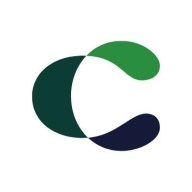![Cisco SecureX [EOL] Logo](https://images.peerspot.com/image/upload/c_scale,dpr_3.0,f_auto,q_100,w_64/0dra2w8zbx5vrvwmhkdswx9l90ys.jpg)

Find out what your peers are saying about Sonar, Veracode, Checkmarx and others in Application Security Tools.


| Company Size | Count |
|---|---|
| Small Business | 4 |
| Midsize Enterprise | 7 |
| Large Enterprise | 3 |
| Company Size | Count |
|---|---|
| Small Business | 2 |
| Midsize Enterprise | 3 |
| Large Enterprise | 6 |
Cisco SecureX is an integrated security platform that connects the breadth of Cisco's integrated security portfolio and the customer's infrastructure to create a consistent experience. The solution unifies visibility, enables automation, and strengthens your security across network, endpoints, cloud, and applications. Cisco SecureX is embedded within every Cisco Security product and supports integrations with SIEM and SOAR, so customers will not need to replace any solution or worry about layering on new technology.
Cisco SecureX Features
Cisco SecureX has many valuable key features. Some of the most useful ones include:
Cisco SecureX Benefits
Some of the benefits of using Cisco SecureX include:
Reviews from Real Users
Below are some reviews and helpful feedback written by Cisco SecureX users.
PeerSpot user Wouter H., Technical Team Lead Network & Security at Missing Piece BV, shares several reasons why he thinks the solution is fantastic. In his opinion, “SecureX takes all the separate pieces of security within your company, adds in intelligence from different sites and services on the internet, and makes them work together. If an email is received on a machine and malware is being executed, it can be put into lockdown mode. The fact that you can have a single solution that combines endpoint intelligence with email intelligence, firewalls, and publicly available intelligence is really helpful. Also, SecureX provides us with contextual awareness throughout our security ecosystem. Before SecureX, things that were not possible, or that would take days, now literally take seconds to find out.
Michal S., Infrastructure Engineer at a media company, says, “SecureX provides many measurements and has a really good dashboard. Working with it you are able to see things very clearly and you have every detail on a single display. That saves us money and time.” He also adds, “It brings all our data into a central point. It also shows us many data connections between many of our environments. SecureX gives you really good information about potential risks. You are able to find the source of a risk, a potential risk from a user or a machine.”
Blair A., Technology Director at Shawnee Heights USD #450, explains, "One of the most valuable features is the simplicity of deploying SecureX. It's very easy to do that and then you gain very detailed visibility into everything that's going on in your network and, obviously, at the device level. There's just a wealth of information that you can pull from all of these products that are part of SecureX. You know exactly if you have an issue or not."
Contrast Security is the world’s leading provider of security technology that enables software applications to protect themselves against cyberattacks, heralding the new era of self-protecting software. Contrast's patented deep security instrumentation is the breakthrough technology that enables highly accurate assessment and always-on protection of an entire application portfolio, without disruptive scanning or expensive security experts. Only Contrast has sensors that work actively inside applications to uncover vulnerabilities, prevent data breaches, and secure the entire enterprise from development, to operations, to production.
We monitor all Application Security Tools reviews to prevent fraudulent reviews and keep review quality high. We do not post reviews by company employees or direct competitors. We validate each review for authenticity via cross-reference with LinkedIn, and personal follow-up with the reviewer when necessary.